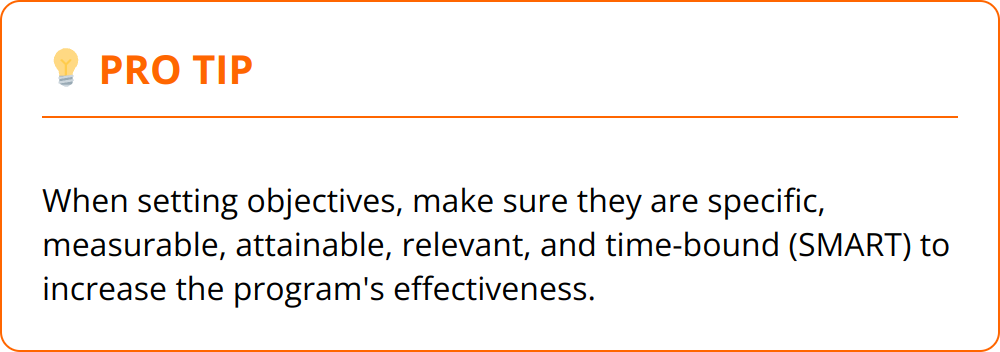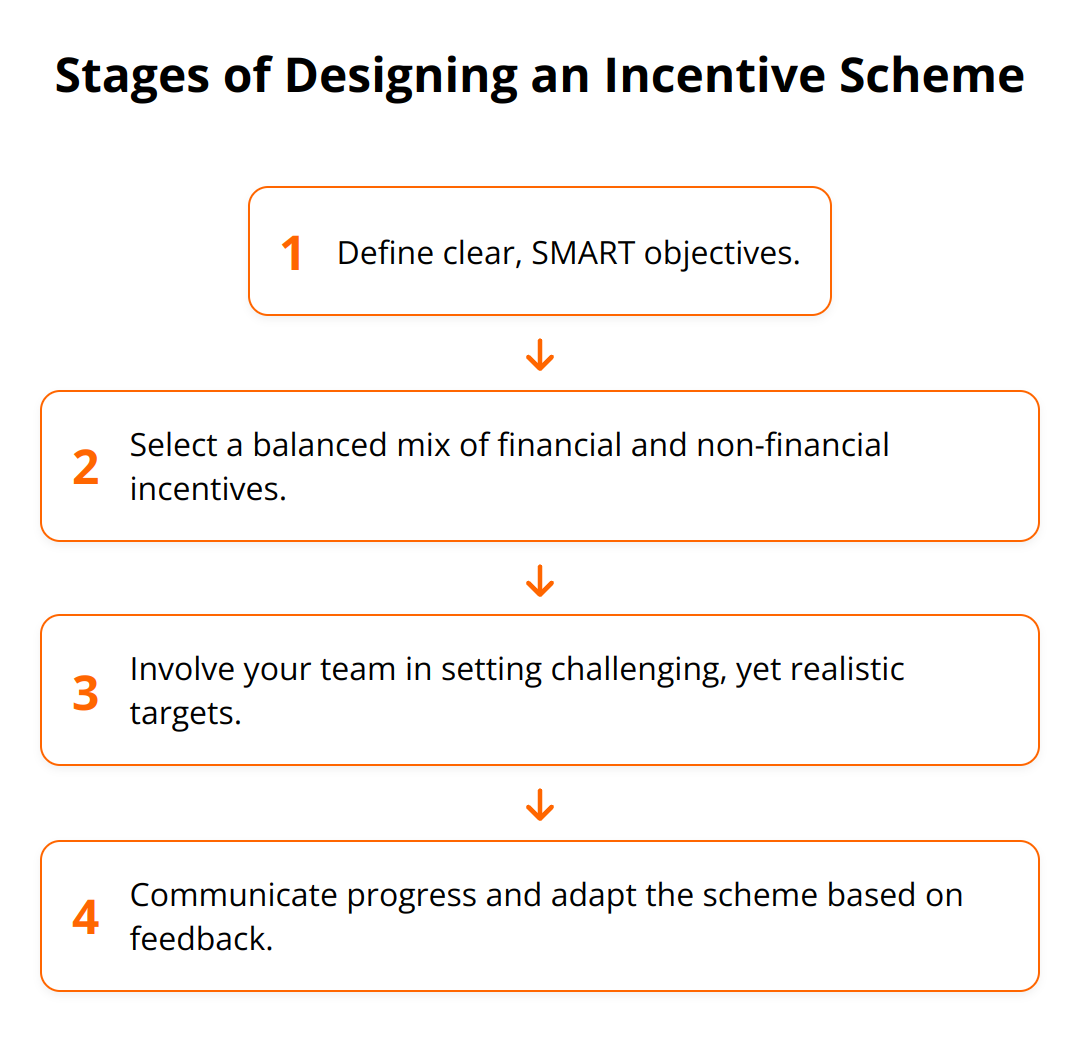
We at Reward the World understand that finding the right incentive scheme can significantly boost team morale and performance. It’s not just about rewards; it’s about creating a system that aligns with your company’s goals and motivates employees effectively. This guide: Effective Incentive Schemes [Guide], aims to walk you through the essentials of crafting incentive schemes that work. From understanding the basics to implementing a strategy tailored for success, we’ve got you covered.
Crafting Effective Incentive Schemes
In the realm of business, incentive schemes are pivotal tools for enhancing productivity and morale. These schemes, when designed thoughtfully, can lead to a considerable uplift in performance, fostering an environment of motivation and engagement among employees. The effectiveness of these programs lies in their ability to align with the overarching goals of the company while offering tangible rewards that resonate with the team.
Incentive Schemes Explained
At its core, an incentive scheme is a structured plan designed to encourage specific behaviors or achievements among employees. The primary goal is to reward individuals or teams who meet or exceed predetermined targets, thus motivating others to elevate their performance. These rewards can take various forms, from monetary bonuses to additional time off, and are meant to acknowledge the hard work and achievements of employees.


Diverse Incentive Types
Navigating through the myriad of incentive types can be overwhelming. However, understanding the landscape is essential. Broadly, incentives are categorized into financial and non-financial rewards. Financial incentives might include bonuses, profit sharing, or stock options, which directly impact an employee’s earnings. Non-financial incentives, on the other hand, focus on recognition, career advancement opportunities, or access to special projects, addressing intrinsic motivational needs.
An effective scheme often combines elements of both, catering to diverse employee preferences and motivations. For instance, while some employees are motivated by the prospect of a year-end bonus, others might find value in leadership opportunities or professional development programs.
Incentives and Workplace Motivation
The significance of incentives in driving workplace motivation cannot be understated. A well-implemented incentive program goes beyond mere rewards; it signifies recognition and appreciation, factors known to directly influence employee engagement and satisfaction. Moreover, incentives can steer employee behavior towards company goals, ensuring a shared focus on achieving business objectives.
However, the success of any incentive scheme hinges on its relevance to the employees and alignment with company values. A one-size-fits-all approach rarely yields the desired results. Tailoring incentives to meet the specific needs and preferences of your team members can dramatically enhance the efficacy of the program. This requires a deep understanding of what motivates your team and the ability to adjust the scheme as those motivations evolve.
For practical insights on setting up an incentive scheme, consider exploring resources on employeerecognitionideas and surveycompletiontips, which offer valuable guidelines and examples.
Key Takeaways:
- Effective incentive schemes align with company goals and motivate employees.
- A blend of financial and non-financial rewards caters to diverse employee needs.
- Customization and relevance of rewards are imperative for the scheme’s success.
- Continuous evaluation and adaptation of the incentive program ensure its effectiveness over time.
By focusing on the needs of your team and aligning rewards with your company’s objectives, an incentive scheme can become a powerful catalyst for growth and engagement.
Designing Incentive Schemes
To drive employee engagement and achieve business goals, designing effective incentive schemes is essential. This step involves strategic planning and a deep understanding of your workforce. Let’s explore how to establish objectives, select incentives, and set targets to ensure the success of your incentive program.
Establish Clear Objectives
Before launching an incentive scheme, clearly define what you aim to achieve. Objectives could range from improving sales numbers, enhancing customer service, to boosting employee productivity. Specific goals provide direction and help measure the program’s success. For example, if the objective is to increase sales, set a target percentage of growth. This specificity ensures everyone knows what success looks like.

Selecting the Right Incentive Mix
Choosing incentives that resonate with your team is pivotal. Remember, not all employees are motivated by the same rewards. A mix of financial and non-financial incentives often yields the best results. Financial incentives could include bonuses or profit sharing, while non-financial incentives might focus on recognition, professional development, or additional time off.
To understand what motivates your employees, surveying or holding focus group discussions can be incredibly beneficial. Insights from these activities enable you to tailor the incentive scheme to your team’s preferences, making it more effective.
Setting Achievable Targets
Targets within incentive schemes must be challenging, yet attainable. Unrealistic goals can demotivate your team and cause disengagement. It’s important to balance ambition with realism.
When setting targets, involve your team in the process. This inclusion fosters a sense of ownership and commitment towards achieving the goals. Additionally, clear guidelines on how targets are measured and achieved help maintain program transparency.
Practical Tips for Effective Design
- Involve your team in the goal-setting process to increase buy-in and commitment.
- Diversify rewards to cater to different motivational drivers among your employees.
- Communicate clearly and frequently about the program’s progress and achievements.
- Review and adjust the incentive scheme regularly based on feedback and results.
Incentive programs are not set-and-forget initiatives. They require ongoing management and adaptation to remain relevant and motivating. By following these guidelines, you can create a dynamic incentive scheme that not only meets your business objectives but also keeps your team motivated and engaged.

For more insights, exploring the importance of employee recognition and incentive program analytics can further refine your approach to designing effective incentive schemes.
Implementing Incentive Schemes
Successfully rolling out incentive schemes requires more than just announcing them. Effective implementation hinges on communication, monitoring, and the ability to adjust and optimize over time based on feedback. Here, practicality is king. It’s about actionable strategies that ensure your incentive schemes not only reach the ground running but also adapt and evolve for sustained engagement and performance.
Clear Communication is Key
The launch of any incentive scheme should begin with comprehensive communication. Employees must understand not only the “what” and the “how” but also the “why” behind the program. Clear communication sets the expectation right from the start and addresses any questions or concerns that might arise, preventing misunderstandings that could undermine the program’s effectiveness.
- Start with an all-hands meeting to introduce the scheme.
- Provide detailed documentation that outlines how the incentive scheme works.
- Use regular updates to keep everyone informed about their progress and any changes to the program.
Transparency fosters trust. When employees see that the rules of the game are fair and applied equally, it enhances their buy-in and participation.
Establishing Monitoring and Feedback Loops
For incentive schemes to maintain their relevance and effectiveness, establishing mechanisms for monitoring performance and gathering feedback is essential. This two-way communication channel ensures that both employees feel heard and that managers have the insights needed to make informed adjustments.
- Utilize surveys or feedback sessions post-implementation to understand employee sentiment.
- Track key performance indicators (KPIs) relevant to the incentive scheme’s objectives.
Monitoring shouldn’t be seen as a Big Brother approach but rather an open-door policy where feedback is encouraged and valued.
Adaptation and Optimization
No incentive scheme is perfect from the outset. They must evolve based on real-world performance data and feedback from participants. This adaptability allows you to fine-tune the program, making it more effective over time and ensuring it continues to meet the changing needs and motivations of your team.
- Conduct quarterly reviews of the incentive scheme to evaluate its success and areas for improvement.
- Be prepared to adjust rewards and targets to keep the program engaging and aligned with company goals.
- Recognize and share successes widely to highlight the scheme’s positive impact.
Optimization is not a one-time task but a continuous journey. Staying responsive to feedback and being willing to make changes are fundamental to keeping your incentive scheme relevant and motivating.
Practical Implementation Tips:
- Start with clear, concise communication
- Establish feedback mechanisms
- Be ready to adapt based on feedback and results
For more detailed insights on creating effective feedback mechanisms, consider reading about incentive program analytics.
Through attentive communication, thoughtful monitoring, and the willingness to adjust, your incentive schemes can significantly contribute to achieving business goals and enhancing team morale. The key is to remain committed to the process, listen to your team, and continuously seek improvement.
Final Thoughts
Effective incentive schemes are vital for fostering engagement, boosting morale, and aligning your team’s efforts with your company’s goals. The journey from crafting to implementing these schemes requires thoughtful planning, a deep understanding of your team’s motivations, and an adaptable approach to meet evolving needs and preferences.
![Key Takeaways - Effective Incentive Schemes [Guide]](https://rewardtheworld.net/wp-content/uploads/2024/04/Effective_Incentive_Schemes__Guide__5_2024_04_11_07_05_43_053188_00_00.png)
- Align rewards with company objectives and employee motivations
- Mix financial and non-financial incentives to cater to varied preferences
- Ensure clarity, relevance, and adaptability of incentives
- Communicate transparently and establish robust feedback loops
- Continuously evaluate and optimize the scheme based on real-world feedback
Encouragement to experiment and adapt cannot be overstated. The landscape of workplace motivation is dynamic, with employee needs and business goals shifting over time. The ability to tailor your incentive scheme, listen to feedback, and make necessary adjustments is fundamental to maintaining an effective program.
At Reward the World, we understand the power of well-structured incentive schemes. Our platform is designed to make it easier for businesses to align rewards with their strategic objectives. With our expansive offerings, ranging from eGift cards to cash payments and points, customizable to suit various demographics and budgets, we’re here to help you enhance engagement and drive performance.
Remember, the success of any incentive scheme lies not just in its launch but in its ongoing management and evolution. The goal is to create an environment that continuously motivates and engages, thereby driving your business forward. So, dive into the process, keep your objectives clear, and stay open to learning and adapting along the way. Your efforts will not only boost team morale but also contribute significantly to your company’s success. We hope this: Effective Incentive Schemes [Guide] will be helpful to your effort.
